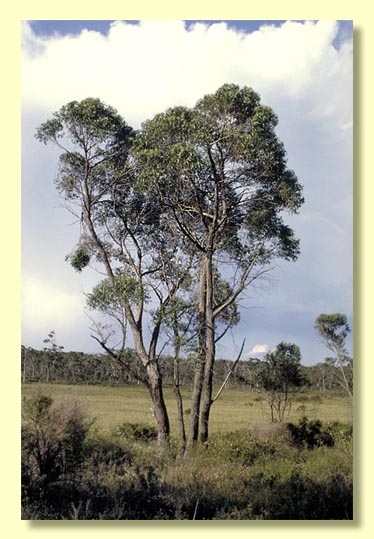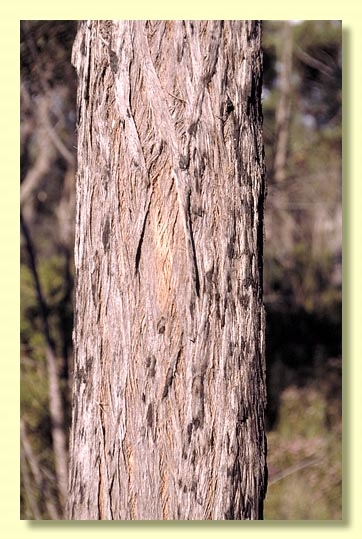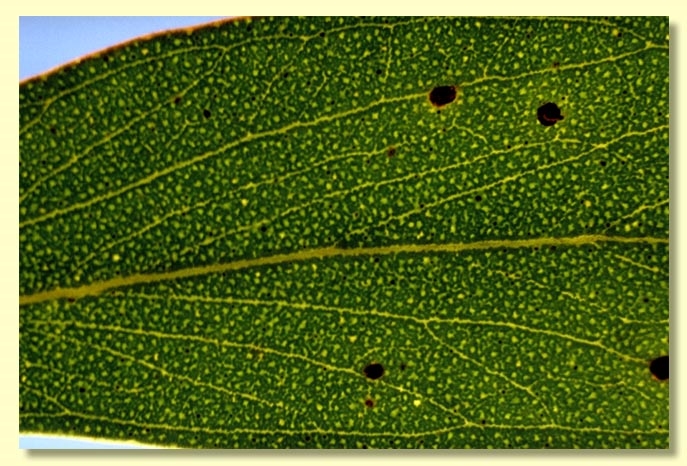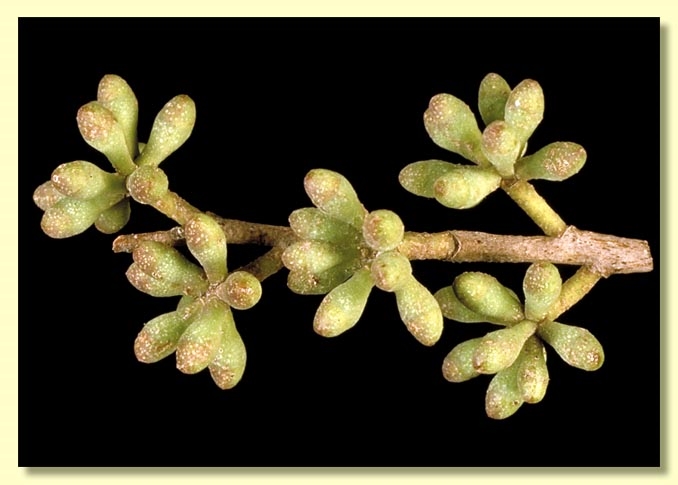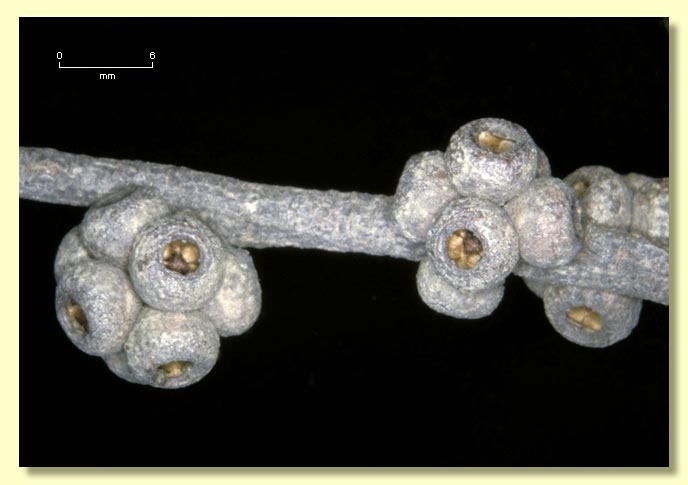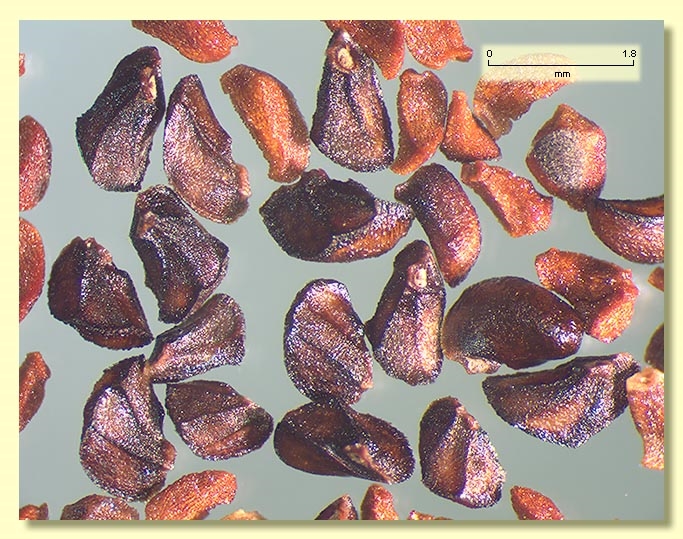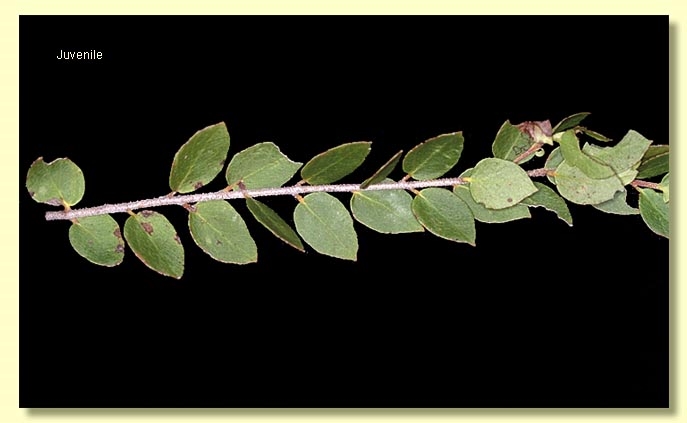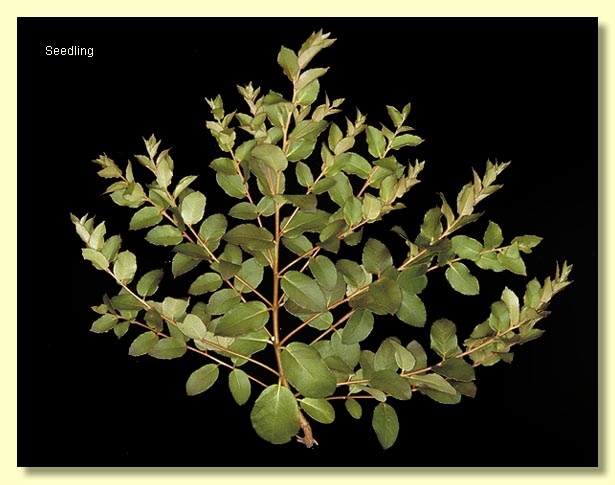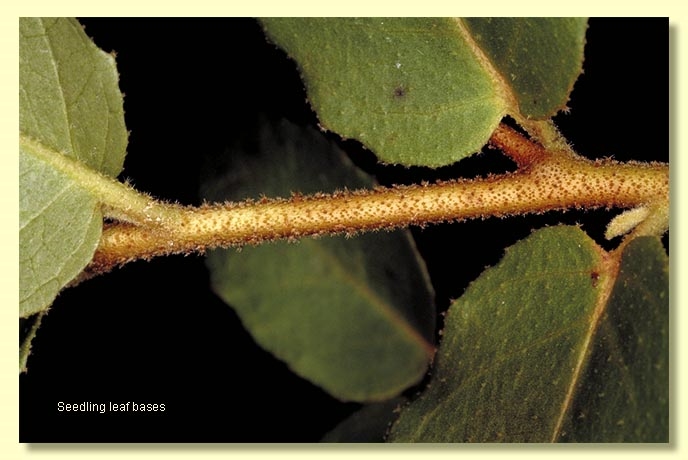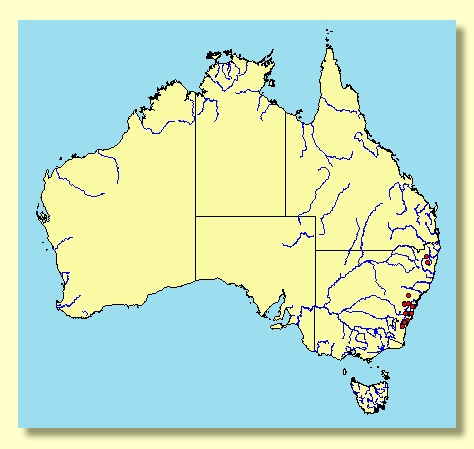Euclid - Online edition
Eucalyptus ligustrina
Eucalyptus | Eucalyptus | Capillulus | Pachyphloius
Shrub, mallee or tree to 7 m tall. Forming a lignotuber.
Bark rough to ca 2–3 cm branches, stringy, grey or grey-brown.
Juvenile growth (coppice or field seedlings to 50 cm): stem rounded in cross-section, scabrid; juvenile leaves, opposite for a few pairs then alternate, shortly petiolate to almost sessile, ovate or elliptical, 1–3.8 cm long, 0.7–2.2 cm wide, margin entire to irregular and undulate, base lobed to rounded, green; scabrid on growing tips, stems, petioles and both leaf surfaces until at least node 30.
Adult leaves alternate, petiole 0.4–1 cm long; blade lanceolate to falcate to ovate, 3–10 cm long, 0.5–2 cm wide, base oblique or tapering to petiole, slightly discolorous, or concolorous, glossy, green, side-veins acute, reticulation invisible, intramarginal vein parallel to and just within margin, oil glands very irregular, island.
Inflorescence axillary unbranched, peduncles 0.4–0.7 cm long, buds in umbels of 9 or 11, sessile or on pedicels to 0.2 cm. Mature buds broadly fusiform to ovoid to obovoid, 0.3–0.5 cm long, 0.2–0.3 cm wide, yellow or green, smooth or scurfy, scar absent, operculum conical to rounded, stamens irregularly flexed, anthers reniform to cordate, versatile, dorsifixed, dehiscing by confluent slits, style long, stigma tapered, locules 3 or 4, the placentae each with 2 vertical ovule rows. Flowers white.
Fruit sessile or pedicels 0.1 cm, hemispherical or truncate-globose, 0.3–0.6 cm long, 0.5–1 cm wide, disc slightly raised, level or descending, valves 3 or 4, near rim level or enclosed.
Seeds dark brown, black or grey, 1.5–2 mm long, pyramidal or obliquely pyramidal, dorsal surface smooth, hilum terminal.
Cultivated seedlings (measured at ca node 10): cotyledons reniform; stems rounded in cross-section, stellate-hairy; leaves sessile to shortly petiolate, opposite for several pairs then becoming alternate, ovate to broadly lanceolate or elliptical, 4–7.5 cm long, 2–5.5 cm wide, lower leaves amplexicaul but base becoming rounded when petiolate, margin irregular due to hairs, also undulate, discolorous, mid-green above, paler below, lamina sparsely stellate-hairy at lower nodes.
Flowering has been recorded in April, May, June, September and October.
A small, often mallee, stringybark endemic to New South Wales with scattered distribution from Bulli Pass and Jamberoo Pass to the Blue Mountains west of Sydney, e.g. Kings Tableland and north to the Northern Tablelands, e.g. the Gibraltar Range north-east of Glen Innes, on poor sandstone or granite-derived soils. An outlier population is kmown from Deua National park in the south. Eucalyptus ligustrina is fully rough-barked, has small green adult leaves (3–10 cm long), virtually sessile buds and fruit that are wider than long. Juvenile growth is scabrid/hairy for many nodes and small-leaved.
Among the stringybarks occurring within its natural range Eucalyptus ligustrina is distinguished by the low stature, small leaves and small, crowded buds and fruit.
MORE ABOUT STRINGYBARKS

